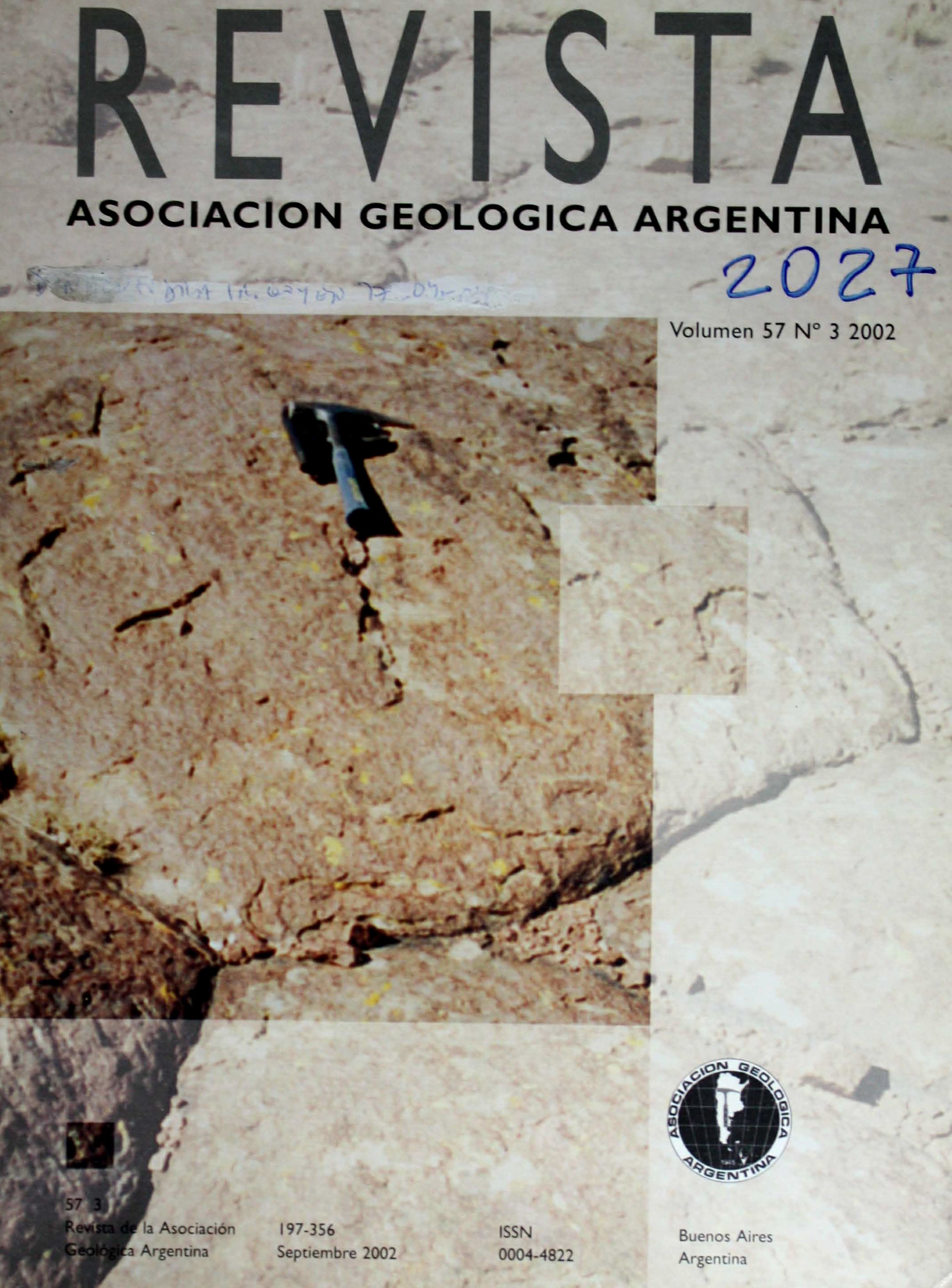The Upper Cretaceous-Paleogene from the Río Bueno area, Atlantic coast of the Isla Grande de Tierra del Fuego
Main Article Content
Abstract
A composite section, 1400 m thick, is established for the Upper Cretaceous-Paleogene strata in the fold and thrust belt of the Andes Fueguinos, south of 54° 30'S. The basal Policarpo Formation, > 350 m thick, consists of tuffaceous sandstones and bioturbated sandstones and siltstones. The ammonites Maorites densicostatus and Diplomoceras sp.; foraminifera common to the Gaudryina healyi Zone; and the dynocysts Manumiella seelandica and Operculodium cf. azcaratei indicate a Maastrichtian age. The Paleocene to lower Eocene include four new formations. The Cabo Leticia Formation, c.150 m, Paleocene, consists of gravity flows deposits: brecchias; conglomerates; and massive, tuffaceous sandstones. La Barca Formation, c. 220 m, includes two members: LB1, tuffaceous sandstones and intercalated carbonaceous siltstones; and LB2, black mudstones with Palaeocystodinium golzowense and Spiroplectammina spectabilis. P. golzowense and the Bulimina karpatica Assemblage in LB1 indicate a late Paleocene age. Punta Noguera Formation, 380 m, is dominated by glauconite rich, massive, tuffaceous sandstones with interbedded turbidite packages. The dynocyst group Apectodinium, Deflandrea robusta, Palaeocystodinium sp., and Odontodinium askinae; the foraminifera Alabamina creta, Charltonina acutimarginata, Valvulineria teurensis and the first ocurrence of Elphidium and Cribrorotalia suggest an age near the Paleocene/Eocene boundary. The Cerro Ruperto Formation, 200 m, is dominated by glauconite rich, silty very fine sandstones and siltstones; dominance of Deflandrea dartmooria indicate an early Eocene age. Resting on angular unconformity, the Río Bueno Formation, c. 60-80 m, consists of carbonate rocks; its member RB1, rhythmically bedded grainstones, with the planktic foraminifera Planorotalites australiformis and Subbotina linaperta is of early middle Eocene age; and its member RB2, regular alternation of grainstones and bioturbated marls and micrites, with Elphidium saginatum and Bulimina cf. bortonica, is assigned to the mid middle Eocene. The sedimentary and stratigraphic features of the Maastrichtian/Eocene have a strong tectonic control, suggesting that the foreland phase of evolution of the basin has been active at least since the Maastrichtian.
Article Details

This work is licensed under a Creative Commons Attribution-NonCommercial 4.0 International License.
Nota de copyright
Los autores conservan los derechos de autor y garantizan a la revista el derecho de ser la primera publicación del trabajo licenciado según una licencia de atribución Creative Commons que permite a otros compartir el trabajo con el reconocimiento de la autoría y de la publicación en la que se publicó por primera vez.
Declaración de privacidad
Los nombres y direcciones de correo electrónico introducidos en esta revista se usarán exclusivamente para los fines declarados por esta revista y no estarán disponibles para ningún otro propósito u otra persona.

